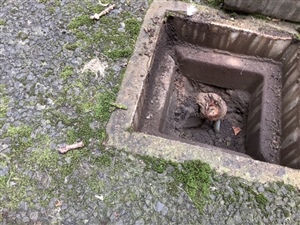A relatively small parish church has 8 down conductors connected to rod electrodes. Each electrode measured separately ranged from 215 ohms to 12 ohms with the overall value being around 8 ohms. Now I am aware that the overall value should be less than 10 and that each individual electrode should be no more than 8x10. We have one at 215 and one at 135, the others meeting that requirement. It is easy for me to advise that the system does not meet code but I do not have the expertise to assess the implications of the situation. I would appreciate your opinion.

